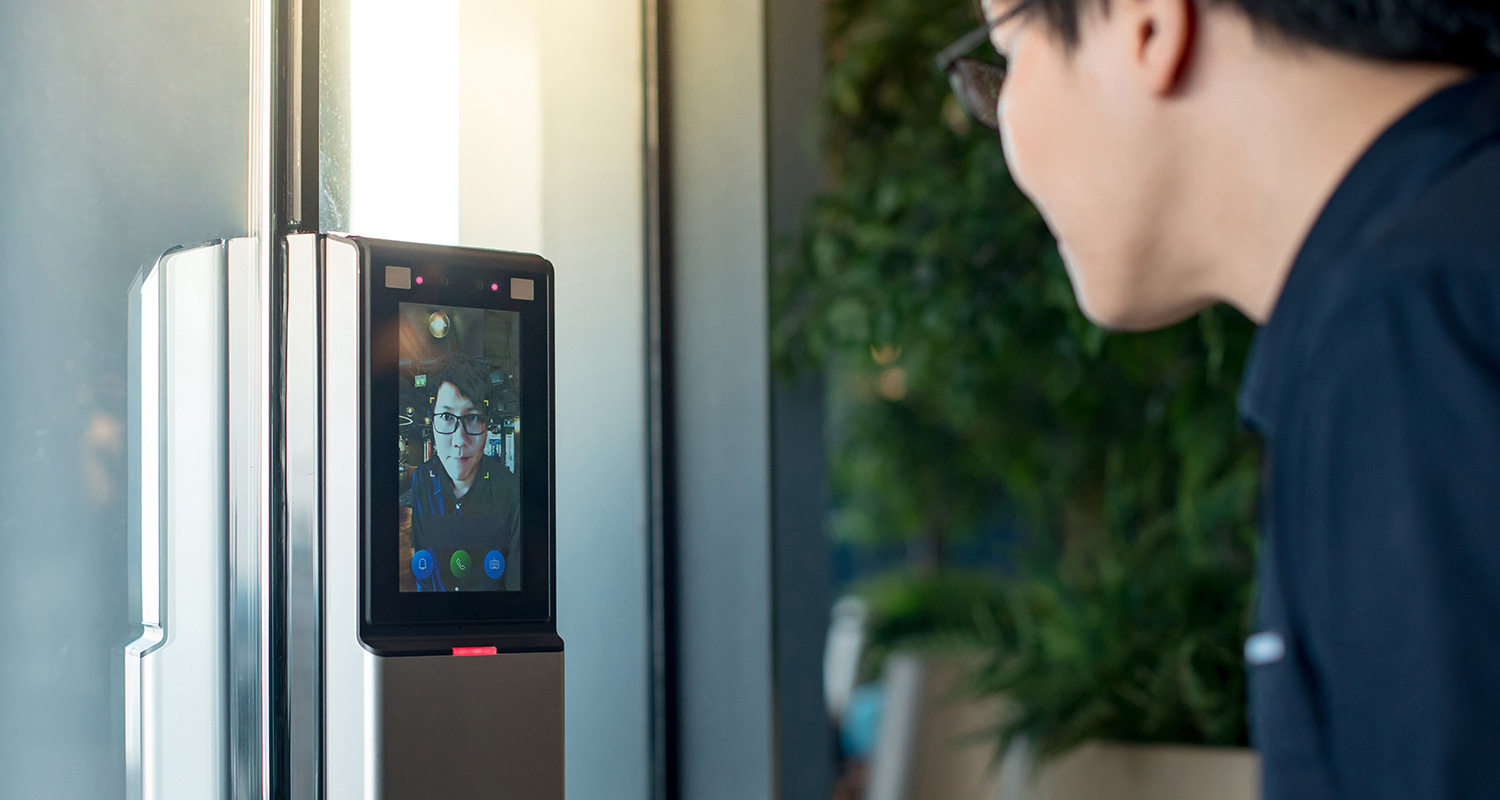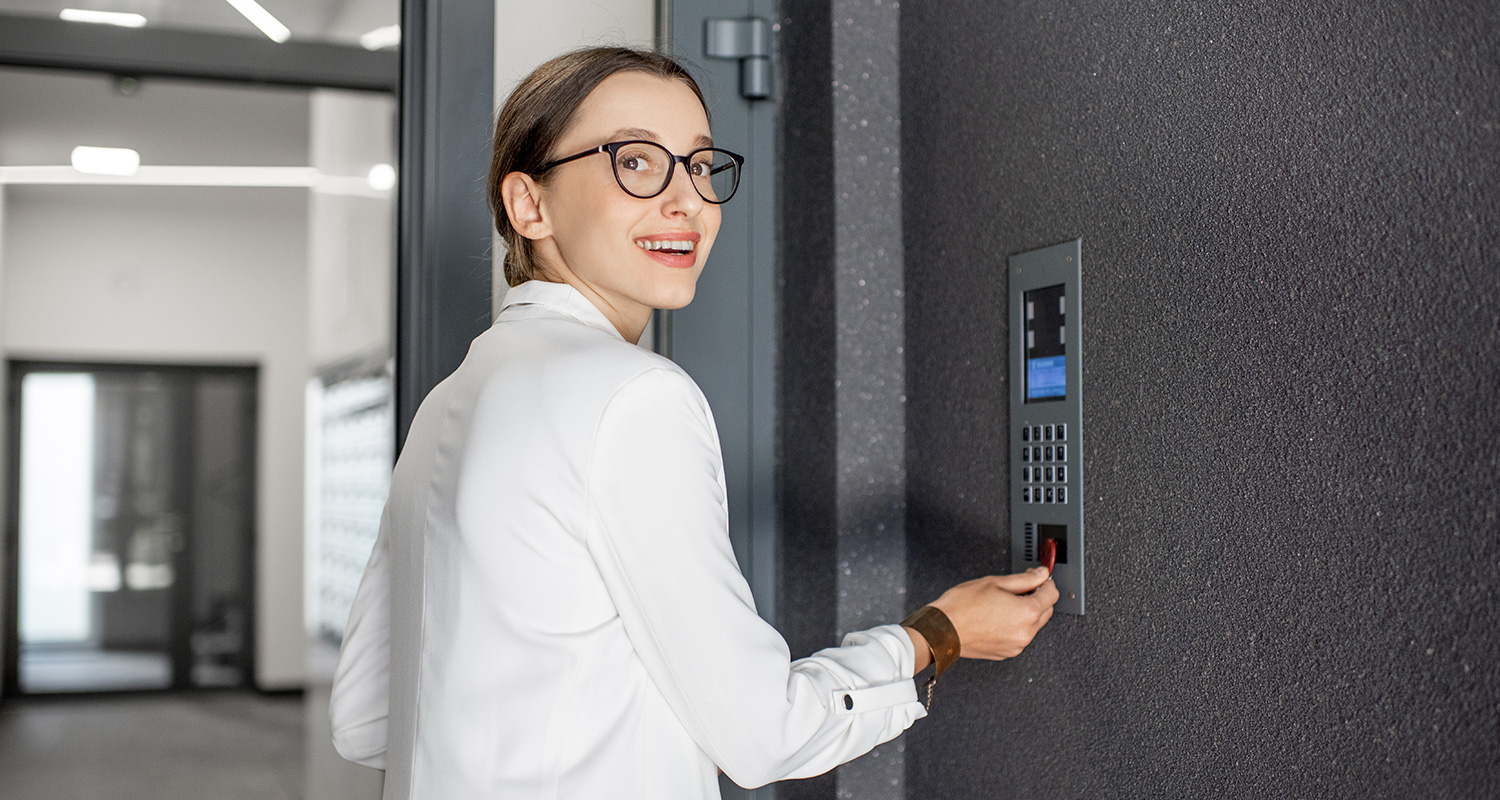As Orlando experiences rapid growth across tourism, logistics, healthcare, and housing, protecting commercial properties has never been more critical. Over 75% of local businesses plan to upgrade their access control systems by 2026, embracing innovative technologies that enhance security, streamline management, and reduce operational costs.
In this article, we explore five essential access control technologies transforming how companies secure their facilities, from cloud-based platforms to advanced biometrics. We’ll also break down the most searched trends, technologies, and questions shaping Orlando’s commercial security landscape, and how your company can stay ahead.
Whether you oversee multi-family housing, healthcare centers, manufacturing facilities, or government buildings, staying informed on these trends will help you make smarter security decisions.
Contents:
Why Orlando Businesses Are Leading the Access Control Revolution
1. Cloud-Based Platforms: The Foundation for Scalable, Remote Security Management
2. Mobile Credentials: Convenience Meets Advanced Security
3. Biometric Integration: Ultimate Security for High-Security Applications
4. Video Integration: Creating a Comprehensive Security Ecosystem
5. Visitor Management Systems: Enhancing Security and First Impressions
Making the Right Choice: Key Considerations for Access Control Systems

Why Orlando Businesses Are Leading the Access Control Revolution
As the Orlando metro area experiences rapid employment growth and economic expansion, the demand for smarter, more scalable access control solutions is accelerating. The region’s diverse industries, from thriving tech startups and healthcare networks to logistics hubs and hospitality giants, require flexible, future-ready security systems that evolve with operational needs while controlling long-term costs.
Orlando’s unique challenges further fuel the shift toward modern access control. Factors such as hurricane preparedness, increased tenant mobility, and strict multi-family housing regulations (e.g., including Miya’s Law) are compelling businesses and property managers to adopt advanced, reliable technologies. These systems not only protect assets but also enhance compliance, efficiency, and resilience.
The 5 Key Technologies
1. Cloud-Based Platforms: The Foundation for Scalable, Remote Security Management
What Sets Cloud Access Apart?
Cloud-based access control systems shift the core intelligence of your security infrastructure to secure, off-site cloud servers. Unlike traditional systems that rely on bulky on-premise hardware, cloud platforms allow administrators to manage and monitor access from anywhere with an internet connection, making it ideal for modern, mobile operations.
How Cloud Access Control Elevates Business Operations
- Scalability: Seamlessly add new doors, users, or entire buildings without investing in costly, complex upgrades.
- Remote Access: Whether you’re managing an office in the city or properties across multiple regions, real-time control is just a click away.
- Cost Efficiency: Reduce upfront installation costs and long-term IT support expenses by minimizing physical infrastructure.
- Automatic Updates: Receive ongoing software improvements, feature enhancements, and critical security patches with zero downtime.
- Centralized Control: Ideal for business owners overseeing multiple sites such as healthcare facilities, multi-family properties, or resort operations.
According to recent industry reports, cloud-based access control systems deliver an impressive 99.9% unlock reliability, ensuring consistent access while enhancing overall operational uptime. With the growing demand for flexible, user-friendly, and future-proof security solutions, cloud platforms are rapidly becoming the gold standard for today’s commercial sector.
2. Mobile Credentials: Convenience Meets Advanced Security
What Are Mobile Credentials?
Mobile credentials transform smartphones into secure, digital access keys—eliminating the hassle of physical badges or keycards. Using Bluetooth or NFC (Near Field Communication), employees, tenants, and authorized personnel can unlock doors with a simple tap or proximity detection, all while maintaining high levels of security. Because most people carry their phones everywhere, the risk of losing access credentials is significantly reduced.
How Mobile Access Improves Modern Workspaces
- Enhanced Security: Smartphones support biometric locks like Face ID or fingerprint authentication, adding an extra layer of protection through multi-factor verification.
- Instant Provisioning: Quickly issue, modify, or revoke access permissions from a central dashboard, allowing real-time control in emergency or time-sensitive situations.
- Cost Savings: Eliminate the need for printing and replacing plastic cards, reducing material costs and admin time.Sustainability: Cut down on plastic waste by using digital-only access credentials—an eco-conscious move for modern businesses.
- Contactless Entry: Minimize touchpoints and streamline entry for employees, tenants, and visitors alike.
This technology is gaining strong traction among property managers, co-working spaces, and multi-tenant facilities. It not only enhances user experience but also aligns with today’s emphasis on health, flexibility, and operational agility. As businesses move toward smarter, cleaner, and more responsive security ecosystems, mobile access is proving to be a must-have solution.

3. Biometric Integration: Ultimate Security for High-Security Applications
What Is Biometric Access Control?
Biometric systems authenticate individuals by analyzing unique physical or behavioral traits, such as fingerprints, facial recognition, palm geometry, or iris patterns. Unlike traditional keycards or PINs, which can be lost, stolen, or shared, biometric credentials are inherently tied to each person, making them far more secure and virtually impossible to duplicate.
What makes biometric systems even more powerful is their ability to support multi-factor authentication (MFA). By combining a biometric identifier (something you are) with an additional layer like a smartphone credential or secure PIN (something you have or know), organizations can create a layered defense strategy that dramatically reduces the risk of unauthorized access.
Where Biometric Access Makes the Greatest Impact
- Healthcare Facilities: Safeguard patient data, control access to medication storage, and ensure HIPAA compliance through precise, non-transferable identification.
- Government & Financial Buildings: Prevent unauthorized entry into sensitive areas like control rooms, secure vaults, and administrative zones.
- Data Centers & Research Labs: Protect critical infrastructure and intellectual property with biometric access backed by detailed audit trails.
Modern biometric systems also come equipped with anti-spoofing measures to detect fraudulent attempts, like fake fingerprints or photos, and maintain real-time, tamper-resistant logs for audits and investigations. These features are essential for organizations that operate in highly regulated industries or handle confidential data.
As more businesses prioritize identity verification, compliance, and access accountability, biometric access control is becoming an essential part of modern security ecosystems. Whether used alone or integrated into a multi-factor solution, biometrics offer unmatched reliability, efficiency, and peace of mind.
4. Video Integration: Creating a Comprehensive Security Ecosystem
Why Combine Video and Access Control?
Video-integrated access control combines traditional access systems with live or recorded surveillance footage, providing a visual layer of verification for every access event. By pairing video feeds with access logs, security teams can see exactly who is entering a facility and when, thereby improving decision-making in real-time and during investigations.
Why Video Integration Enhances Modern Security Strategies
- Real-Time Monitoring: Instantly view live video alongside access activity to confirm identity or detect anomalies.
- Enhanced Investigations: Review recorded footage directly tied to specific access events, reducing time spent searching video archives.
- Automated Alerts: Use motion detection or AI-enabled cameras to trigger door locks or send alerts during unusual or unauthorized behavior.
- Operational Efficiency: Centralized dashboards unify video and access control into one interface, streamlining workflows for security personnel.
- Risk Reduction: Helps identify tailgating, unauthorized entries, or forced access attempts before they escalate into incidents.
For commercial buildings, resorts, hospitals, and multi-tenant properties, video integration creates a proactive, layered approach to security. In fast-paced environments where every second counts, having instant visual context behind each access event transforms response capabilities and deters threats before they unfold.
5. Visitor Management Systems: Enhancing Security and First Impressions
What Do Modern Systems Offer?
Today’s digital visitor management systems go far beyond paper sign-in sheets. These platforms streamline the entire check-in process, from pre-registration and badge printing to automatic host notifications, while maintaining accurate, time-stamped visitor logs. The result? A secure, efficient, and professional front desk experience that leaves a lasting positive impression.
Why Visitor Management Is a Smart Move for Businesses
- Increased Security: Know who is on-site at all times with real-time tracking, photo capture, and ID verification.
- Contactless Check-In: Essential in healthcare, education, and hospitality sectors where hygiene and safety remain a top priority post-pandemic.
- Compliance Ready: Maintain digital logs that support industry regulations like HIPAA, GDPR, or government security protocols.
- Operational Savings: Eliminate long wait times and reduce staffing needs by automating repetitive front desk tasks.
- Custom Branding: Display your logo and personalized messages to elevate brand perception from the moment guests walk in.
For commercial offices, schools, hospitals, and multi-tenant buildings, a modern visitor management system not only strengthens security but also enhances the guest experience. By blending safety with professionalism, businesses can protect their people and assets while making every visit smooth, efficient, and welcoming.

Making the Right Choice: Key Considerations for Access Control Systems
When evaluating access control options, Orlando businesses should keep the following in mind:
- Budget & ROI: Look for cloud-based solutions that minimize upfront investment while offering scalable pricing models that grow with your needs.
- Integration Needs: Ensure compatibility with existing systems like video surveillance, fire alarms, and building automation for seamless operation.
- User Adoption: Choose intuitive, mobile-friendly platforms that employees and tenants can quickly adapt to.
- Compliance: Prioritize systems that support local and federal regulations, detailed reporting, and audit trails.
- Support: Work with providers that offer 24/7 local technical assistance and rapid emergency service for peace of mind.
With the right access control strategy, Orlando businesses can stay secure, compliant, and ready for whatever comes next.
Ready to Upgrade Your Orlando Business Security?
Investing in these five transformative access control technologies will help future-proof your property, enhance safety, and streamline day-to-day operations.
Whether you’re managing a healthcare facility, multi-tenant building, office space, or retail location, Insyte Security has the experience and solutions to meet your unique needs.
Contact Insyte Security today to schedule your free security assessment and discover how modern access control can elevate your Orlando business.
Frequently Asked Questions
1. What are the biggest advantages of a cloud-based access control system for Orlando businesses?
Cloud access control lets you manage every door, user, and alert from any device, cuts on-site server costs, and scales to new locations in minutes.
Because the software lives off-site, you get automatic updates, built-in cybersecurity, real-time mobile alerts, and one dashboard for multiple buildings, perfect for property managers or franchises spread across Central Florida.
2. Is mobile credentialing really safer than keycards or fobs for multi-family properties?
Yes, encrypted smartphone credentials are harder to copy, auto-expire when a lease ends, and reduce lost-key costs by up to 60%. Residents tap or wave their phone (even offline), and managers revoke access instantly inside the PMS. Backup PINs keep the system usable if a phone is dead.
3. What should Orlando schools or hospitals require in a modern access control platform?
Look for lockdown buttons, HIPAA/FERPA audit trails, integrations with video and mass-notification, plus 24/7 remote support.
A campus-grade system should secure perimeter doors, meds storage, and data rooms, while one-click lockdown and color-coded muster reports protect students, staff, and patients during an emergency.
4. Can our existing CCTV, fire alarms, and HVAC tie into a new access control system?
Absolutely, open-API controllers sync with cameras, alarms, and building automation so one event (e.g., forced door) can trigger video bookmarks, sirens, or HVAC shutdowns.
Unified software means fewer apps to watch and faster incident response, all while meeting NFPA and local fire marshal requirements.
5. Which visitor-management option works best for gated HOAs, resorts, and timeshares?
A QR-code/plate-reader kiosk that pre-screens guests, logs every entry, and texts hosts in real time speeds up gates and eliminates paper logs.
Residents register visitors via app, guards scan a code, and the system syncs with the access control database for instant revocation after checkout.
6. Are touchless or biometric readers worth the investment for Central Florida healthcare and logistics sites?
Yes, contact-free facial or palm readers cut disease transmission, slash badge sharing, and trim door-hold times to under two seconds.
Modern sensors work in Florida humidity and integrate with EHR or WMS software for secure, hygienic, audit-ready authentication.
7. How can access control double as a time-and-attendance tool for manufacturers?
Door swipes populate payroll exports automatically; no extra clocks needed.
Add role-based rules (e.g., overtime alerts) and use the same badge for clock-in, locker rooms, and cafeteria to simplify compliance audits.
8. How does remote door management save Orlando property managers time?
One cloud dashboard lets you unlock doors, issue temporary codes, and see live door status without driving across town, cutting truck rolls by up to 40%.
Pair it with self-guided tour codes for vacant units to increase leasing hours beyond 9-to-5.

